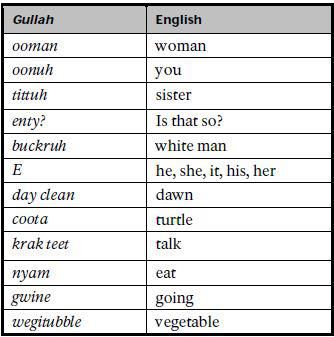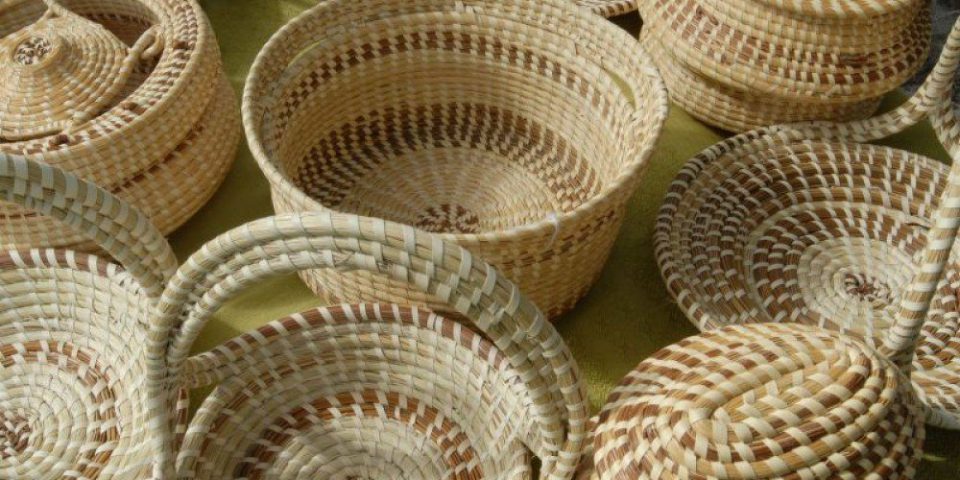Tourism News
Gullah Geechee History in Myrtle Beach
Source: IslandMagazine.net
Whether you’ve been driving down Highway 17 or have visited the Georgetown and Charleston areas, chances are you’ve seen woven baskets being sold on the side of the road. While the peddlers may just seem like everyday people selling their wares, there is actually a rich underlying history behind the baskets being sold, as well as the people selling them.
Their history derives from the Gullah Geechee culture, and the people of that culture are the ones who hold the secret to the art of sweetgrass basket weaving. But their culture isn’t only defined by finely woven baskets; it is deeply rooted in the history of South Carolina revolving around slave trade, plantation life, linguistics, and even Lowcountry cuisine.
The Beginning

Image source: GullahGeecheeNation.com
The Gullah Geechee people are one of the oldest cultural groups still living as a nation within a nation” to this day. There are an estimated 500,000 Gullah people that live along a 500 mile stretch, ranging from Jacksonville, North Carolina all the way down to Jacksonville, Florida. A large portion of the culture’s population resides on the rural Sea Islands, located just off of the coast of South Carolina and Georgia.
The ancestors of the Gullah Geechee people were brought to Charleston in the late 1500s during the slave trade. When these slaves were initially captured, they were placed in prison cells that were located along the West African coast. The prisoners that were held in these cells came from different tribes and regions all across Africa, bringing together a mixture of different dialects and customs. The bringing together of these different groups of Africans was the start of the Gullah culture, as they had to learn to work together to stay true to their African roots as best as possible given the situation at hand.
The climate of the Carolina Colony was great for rice cultivation, but it was tough for the African slaves to deal with, as it was much different than the climate they were accustomed to. The warm and humid climate of South Carolina fostered the diseases that the slaves brought with them, and soon enough malaria and yellow fever were plaguing the plantations in the Carolina Colony. However, a vast majority of the slaves were tolerant to these diseases as they were predisposed to them, but the plantation owners were not. This resulted in the white slave owners fleeing the plantations to stay away from the diseases while some slaves were turned into foreman and left in charge of the work on the rice fields.
While the African slaves worked hard each day on the plantations, the slave-holders figuratively raked in the money as the hype surrounding the rice plantation industry steadily grew year after year. In turn, more and more slaves were being purchased to keep up with the demand for work, and by the early 1700’s, the population of white people compared to the black slave population was overwhelmingly small.
This time of mass-importation is when the Gullah culture was really starting to develop. The Gullah people were determined to keep their distinct African roots, and their lack of contact with the white slave owners and settlers of the Carolina Colony made it possible for them to conserve their African heritage by creating their own language, cuisine, traditions, rituals, and more.
While emancipation evidently occurred and slavery was abolished, the Gullah community stayed put along the coast of South Carolina and Georgia. For years, many Gullah people worked as paid employees on plantations, but when the market collapsed, their socioeconomic status collapsed as well. Nowadays, since the American lifestyle has slightly influenced the Gullah community, some Gullah people branch outside of their isolation and look for work, go to school, and more.
Speaking Gullah

Image source: Pinterest.com
One major part of the Gullah culture is their language, which was developed by combining African words and phrases with English that slaves learned on the plantations.
This mixture of languages is what linguistic scholars refer to as an English-based creole language. Creole languages are created when people from different backgrounds are placed together in situations (in this case, slavery), and a language is developed as a way for these different groups to communicate with one another.
Essentially, Gullah is a mash-up of African languages and English. Of course, the Gullah language isn’t that simple, so readers are encouraged to do more research and learn about this fascinating language.
Traditions & Food

Things such as Gullah traditions and cuisine have firm roots in their African backgrounds.
If you live in the South, you may have heard of painting your doors, shutters, or porch ceilings haint blue” to ward off evil spirits. This custom comes from the Gullah people and is still widely practiced today.
Gullah people will also paste newspaper on their walls in order to distract evil spirits from doing harm to their family, or to ward off spirits from inhabiting their homes.
The Gullah people are well known for their sweetgrass baskets, and for good reason. The baskets they produce are works of art that take tons of effort and patience to create.
Traditionally, men who weren’t able to work on the plantations would weave the baskets, but today you’re more than likely to see a Gullah woman practicing the art and selling them at markets, on the side of the road, or at festivals.
Food is important in every culture, and the Gullah Geechee culture is no different. The Gullah slaves relied on a rice-centric diet, not only because of working on rice plantations but also because that was part of their regular diet in their motherland.
Because of this, Gullah cuisine is comprised of many rice dishes, but it is also influenced by what was readily available on the South Carolina coast and the rations given to slaves.
Typical Rations
Slaves would receive weekly rations that included:
- 10 quarts of rice or peas; one bushel of sweet potatoes
- 2-3 mullet or mackerel-salt fish
- 1 pint molasses
- 2 lbs of pork
- Bacon & beef
- 1 peck of meal
- 1 peck of grits
The ingredients included in these rations can still be found in many Gullah and Lowcountry dishes today.
Lasting Impact
There is no doubt that the Gullah culture runs deep in the history of slavery, plantation life, and the general history of South Carolina, but what you read here barely scratches the surface.
We must continue to celebrate the Gullah people, their resilience, their ability to adapt to adverse situations, their traditions, their cuisine, and learn as much as possible about their culture through further readings written by experts and members of the community.
Sources: Yale.edu; Gullah.tv; UltimateGullah.com; PawleysIsland.com


